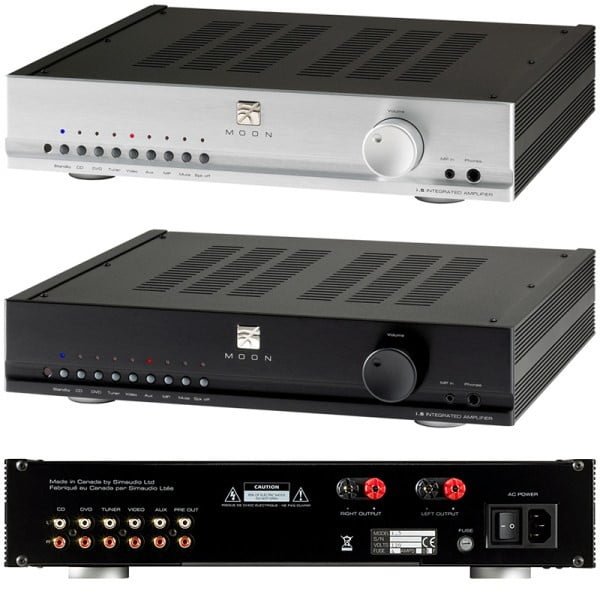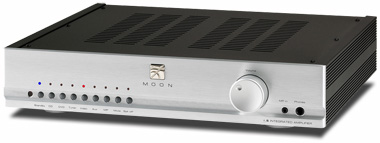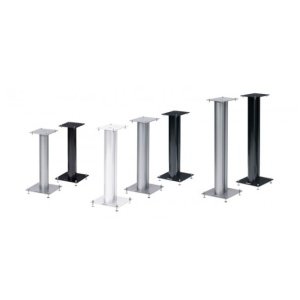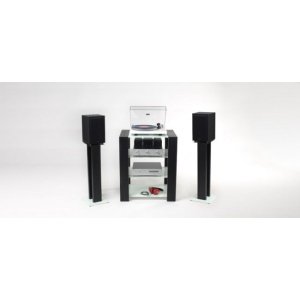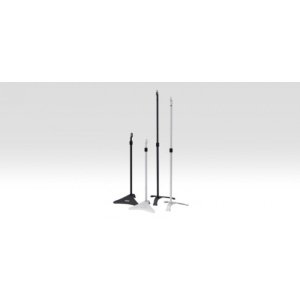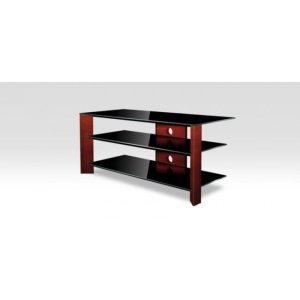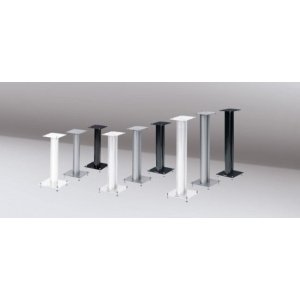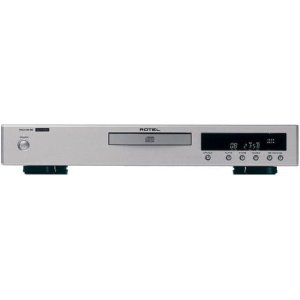| October 1, 2009
Simaudio Moon i.5 Integrated Amplifier
There are all sorts of philosophies regarding integrated amplifiers. In the 1960s, when my addiction to audio first emerged, the top stereo integrateds from H.H. Scott, Fisher, and McIntosh featured every kind of control under the sun: separate treble and bass knobs for each channel, inputs for things like "tape head" (a low-level signal from a tape recorder’s play head), and all sorts of equalization curves. Nowadays, some integrateds, such as Blue Circle Audio’s GDC (review in the works), go the opposite route, with only a three-step input selector, a volume control, and a power switch. Though not quite so spare as the GDC, the Simaudio Moon i.5 ($1200 USD) leans toward the latter approach. Description The Moon i.5 matches the appearance and dimensions of Simaudio’s Moon CD.5 CD player: 16.875"W by 3.5"H by just over 13"D. The review sample had an attractive champagne/silver faceplate of thick, extruded aluminum, but the i.5 is also available in black. At the lower left is the standby switch. Depress it and a blue LED above it lights up, signifying that power has been applied to the entire circuit. To the left of that are six pushbutton input selectors, all for line-level sources. The associated jacks for five of these are on the rear panel; the sixth, marked MP (Music Player), is connected to a 1/8" tip-ring-sleeve (TRS) stereo jack at the right of the front panel, for use with an iPod or other such device. Continuing to the left are the Mute and Speaker Off switches. On the right side of the front panel are the sizable (and silky-smooth) volume control, the MP jack, and a standard 1/4" stereo headphone jack. As with the CD.5, the i.5’s On/Off switch is on the rear, next to the three-prong IEC power receptacle. There are five sets of inputs and one pair of Pre Out jacks, all RCAs. The Pre Out jacks can be used to directly drive another power amp (such as that in a powered subwoofer), their levels controlled by the i.5’s volume control. Note that the i.5 reflects the realities of 21st-century audio by omitting the tape-monitor connections and controls of models built during the days of reel-to-reel and cassette recording. Outputs are a single pair of nice five-way binding posts for each channel. I biwire my main speakers, which meant that doing so with the i.5 required a wee bit of ingenuity; it all worked well. The compact remote control, which operates both the i.5 and the CD.5, is nicely laid out and was generally a pleasure to use. Most of the remote’s buttons control CD functions. The only amplifier functions offered are Input, Volume (up/down), and Mute. While the remote has buttons for L/R balance, those functions don’t operate with the i.5; as Simaudio’s Lionel Goodfield told me, "at this price point, it would have been virtually impossible to implement a balance control that wouldn’t degrade sonic performance." According to Simaudio, the i.5 contains "an oversized power supply" that includes a toroidal transformer. Its output is a claimed 40Wpc into 8 ohms or 80Wpc into 4 ohms. Somewhat amazingly, that comes from only a single pair of bipolar transistors per channel. The i.5 is the first amplifier I’ve seen in a long time whose output stages aren’t mounted on substantial heatsinks. Even the output devices of my Linn Majik-1P integrated — just 33Wpc at 8 ohms — are attached to an aluminum heatsink. But Simaudio says its all-aluminum chassis obviates the need for a separate heatsink. In my experience with the i.5, its case never became warm, so it seems they know what they’re talking about. Simaudio recommends at least 400 hours of break-in — that’s nearly 2.5 weeks, and no way to achieve peace with one’s spouse. However, to put in that time while giving the amp a wide-frequency signal to deal with, I connected a Dynaco FM-3 tuner to the i.5 and fed the amp FM interstation noise (similar to white noise) while feeding the amp’s output to a pair of PSB Alpha Mini speakers, wired out of phase and facing each other to minimize what could be heard in the room. At first, it was mildly annoying; but in short order, we didn’t even notice it upstairs. (The music room is on our home’s lower level.)
System As usual, I compared the device under test with my Linn Majik-1P. Input sources were Simaudio’s Moon CD.5 and my Sony CDP-X303ES CD player. I used Linn interconnects with the Sony, Dayton Audio ICs with the CD.5. As is my usual practice, I swapped interconnects during the review period, but could hear no real difference between them. The Moon i.5 drove my reference floorstanding NEAR 50 Me II or my mid-1970s Wharfedale W60E speakers. For those of you unfamiliar with the Wharfedale, it was considered, in its day, a "bookshelf" model, despite its considerable size (25"H x 14"W x 12"D) and weight (+50 pounds). Each closed-box enclosure contains a 12.5" woofer, a 5" acoustically isolated midrange cone, and a 1.25" soft-dome tweeter. To get their tweeters up to ear level, I place the Wharfedales on homemade 9" speaker stands. The W60E’s bass response, limited to about 40Hz and a little loosey-goosey, is definitely not in the same league as the NEAR 50’s, but its mids and highs are, I think, better than the other speaker’s: lively without being strident. |
| Peso | 9,0000 kg |
|---|

